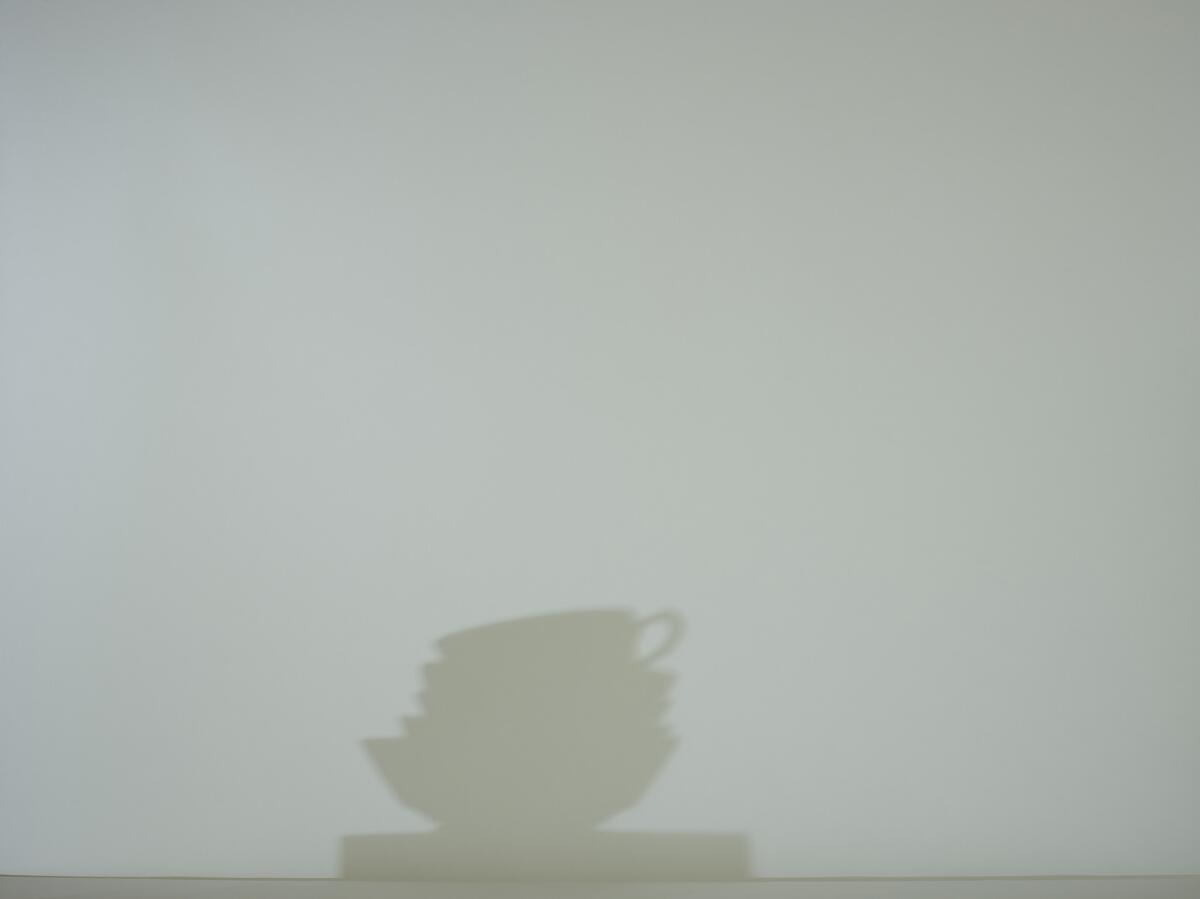In Catherine Wagner’s photographs, shadows of the great Giorgio Morandi
- Share via
Giorgio Morandi's paintings of bottles, vases, cups and bowls never get old — not only because the tabletop still-lifes feel inexhaustibly intimate, but because other artists keep renewing their relevance, looking to them and to Morandi's highly particular practice as impetus, stimulus and source.
For invoking significance through the simple, Morandi (1890-1964) cannot be topped. Painters, printmakers and sculptors continue to answer the call that the Italian artist’s work issues. Photographers and filmmakers too. They shoot in his Bologna studio as acts of homage and inquiry.
Catherine Wagner is the latest to address the phenomenon that is Morandi. Her photographs at Gallery Luisotti make brilliant conversation with his work.
In the eight luminous prints (all 2015 or 2016), an object or constellation of objects from Morandi's studio appears as silhouetted, soft-edged shadow. Wagner photographed the arrangements using light filtered through colored gels that correspond to hues found in Morandi's paintings. Each floating, aluminum-mounted image presents as a luxurious chromatic soak, the figures mere densities within granular, atmospheric fields.
One piece is all-over deep persimmon, another cool gray, and another dilute blood. In one, a creamy pale yellow, the vessels appear slightly italicized by Wagner's oblique angle of view. From left to right, each bowl and cup also grows more diffuse, as if they are leaning toward nothingness, toward release from the bonds of materiality. In this consortium of the definite and indefinite, Wagner has staged a delicious role reversal: photographs that hint and whisper, based on paintings that plainly assert.

Also included in this intelligent and ravishing show are five small black-and-white prints from a 1976 series of "Greenhouse Abstractions." Shots of rippling, folded plastic sheeting, tightly framed and stripped of context, double as meditations on light, shadow and translucency. They hark back to early 20th century photographic abstraction and anticipate by a few years James Welling's topographic images of phyllo dough and aluminum foil.

Wagner's older and especially her newer work here speak to several aspects of Morandi's legacy: the rich interiority possible in images that remain faithful to external appearance; the expansiveness that even a narrow set of variables allows; the electric hum that can emanate from the most silent of pictures.
The Bay Area photographer has long adopted a crisp, spare approach to investigate what constitutes culture. In her "Traces of Morandi," hard edges give way to the vaporous and quavering, and Wagner holds back on topological evidence to present instead a perceptual, conceptual proposition on the order of Plato's cave.
Gallery Luisotti, Bergamot Station, 2525 Michigan Ave., Santa Monica. Through March 31; closed Sundays and Mondays. (310) 453-0043, www.galleryluisotti.com

See all of our latest arts news and reviews at latimes.com/arts.
The biggest entertainment stories
Get our big stories about Hollywood, film, television, music, arts, culture and more right in your inbox as soon as they publish.
You may occasionally receive promotional content from the Los Angeles Times.







